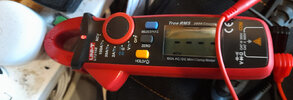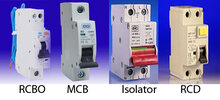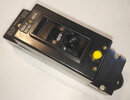- Joined
- 18 Jan 2017
- Messages
- 34
- Reaction score
- 0
- Country

Hi,
One of our power sockets seems to have spontaneously stopped working.
Our tumble dryer was old and already had a fault. We already believed it was on its way out, when we lost power throughout the house during a drying cycle. Sure enough, the switch that tripped on the RCD was the one that controlled the downstairs plug sockets, including the one the dryer was plugged into. We managed to isolate which was at fault by turning them all off, resetting the RCD and then turning them on one by one until the RCD tripped again. It was the socket with the faulty dryer plugged into it (henceforth called socket A). It is controlled with a switch and 13A fuse.
Flicking the socket’s switch to on tripped the RCD, until we unplugged the faulty dryer, then we could flick the dryer’s socket A’s switch to on without issue. We then bought a new dryer rather than have the old one repaired. Sadly, and surprisingly, the new dryer still didn’t work in the aforementioned socket A and needed to be plugged into a different one, meaning socket A was still not working.
I replaced the fuse for socket A but that still didn’t help.
Any ideas?
Thanks
Matt
One of our power sockets seems to have spontaneously stopped working.
Our tumble dryer was old and already had a fault. We already believed it was on its way out, when we lost power throughout the house during a drying cycle. Sure enough, the switch that tripped on the RCD was the one that controlled the downstairs plug sockets, including the one the dryer was plugged into. We managed to isolate which was at fault by turning them all off, resetting the RCD and then turning them on one by one until the RCD tripped again. It was the socket with the faulty dryer plugged into it (henceforth called socket A). It is controlled with a switch and 13A fuse.
Flicking the socket’s switch to on tripped the RCD, until we unplugged the faulty dryer, then we could flick the dryer’s socket A’s switch to on without issue. We then bought a new dryer rather than have the old one repaired. Sadly, and surprisingly, the new dryer still didn’t work in the aforementioned socket A and needed to be plugged into a different one, meaning socket A was still not working.
I replaced the fuse for socket A but that still didn’t help.
Any ideas?
Thanks
Matt
Last edited:



